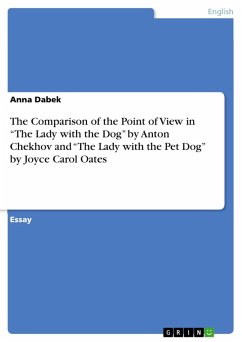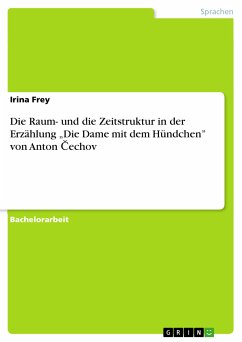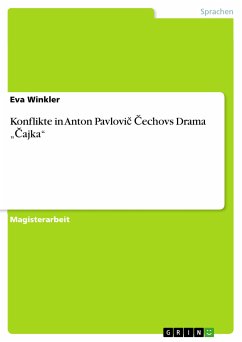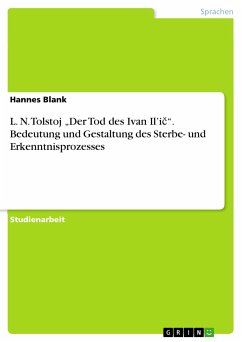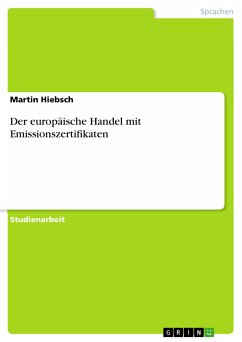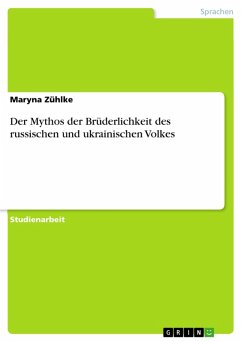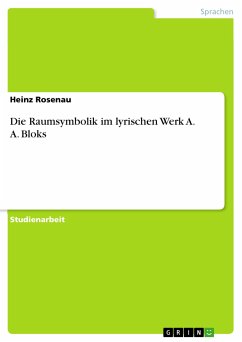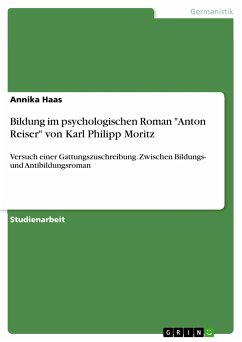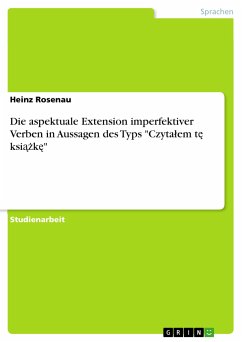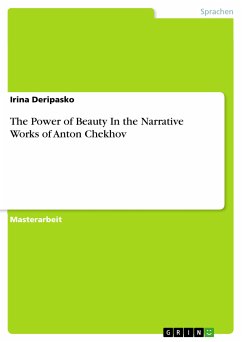
The Power of Beauty In the Narrative Works of Anton Chekhov (eBook, PDF)
Sofort per Download lieferbar
Statt: 42,95 €**
29,99 €
inkl. MwSt. und vom Verlag festgesetzt.
**Preis der gedruckten Ausgabe (Broschiertes Buch)
Alle Infos zum eBook verschenkenWeitere Ausgaben:

PAYBACK Punkte
0 °P sammeln!
Masterarbeit aus dem Jahr 2013 im Fachbereich Russistik / Slavistik, Justus-Liebig-Universität Gießen, Sprache: Deutsch, Abstract: In 2011, Catherine Hakim, a Professor of Sociology from the London Business School, presented a theory about erotic capital being a fourth personal asset alongside economic, social and cultural capital. In her book, Hakim demonstrates the economic and personal advantages of being an attractive person. Professor of Law, Deborah Rhode, and Professor of Economics, Daniel Hamermesh, also published books entitled Beauty Bias and Beauty Pays in the same year; the books...
Masterarbeit aus dem Jahr 2013 im Fachbereich Russistik / Slavistik, Justus-Liebig-Universität Gießen, Sprache: Deutsch, Abstract: In 2011, Catherine Hakim, a Professor of Sociology from the London Business School, presented a theory about erotic capital being a fourth personal asset alongside economic, social and cultural capital. In her book, Hakim demonstrates the economic and personal advantages of being an attractive person. Professor of Law, Deborah Rhode, and Professor of Economics, Daniel Hamermesh, also published books entitled Beauty Bias and Beauty Pays in the same year; the books discuss the advantages and disadvantages of being beautiful or ugly. Since human beauty has been a critical and popular subject for centuries, and includes the issues of worshiping or denying beauty, the cult of ugliness or beauty and the importance or superficiality of beauty, I decided to investigate the theory of erotic capital in classic Russian literature, specifically the narrative works of Anton Chekhov. I have chosen 26 short stories with either a female title character or a woman protagonist. As many literary works concerning women show their weakness, powerlessness and desperate situation, my thesis focuses on the advantages of being a woman as well as why it is a privilege. I analysed the narrative works of Chekhov through the sociological theories of Catherine Hakim and Pierre Bourdieu, while also using the works of literary scholars, Mikhail Bachtin and Jurij Lotman. Following the analysis, I divided all the women characters according to their appearance into two categories: Ladies and Peasant Women. There were numerous differences between these categories of women ranging from how they act, look and sound to how they are treated. If the ladies lived in a world of beauty and love, the peasant women existed in a world of ugliness and sex. Their level of power over men also differs: the ladies had more power and privilege, and the men catered to their every whim but the peasant women were physically and mentally abused, had little influence over men-if they did, it was mostly sexual-and received no financial reward, even if they possessed a high level of social and physical attractiveness. Besides appearance, what distinguishes a lady from a peasant woman is her cultural capital: the combination of education, intelligence, good manners, an understanding of art and culture, and ethical values. Only cultural capital makes a lady out of a peasant woman. [...]
Dieser Download kann aus rechtlichen Gründen nur mit Rechnungsadresse in A, B, BG, CY, CZ, D, DK, EW, E, FIN, F, GR, HR, H, IRL, I, LT, L, LR, M, NL, PL, P, R, S, SLO, SK ausgeliefert werden.




